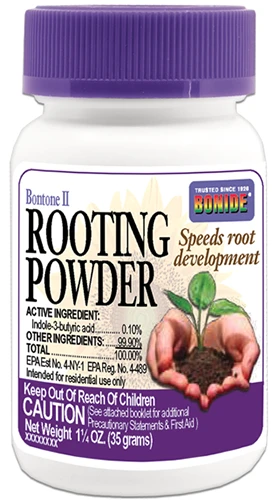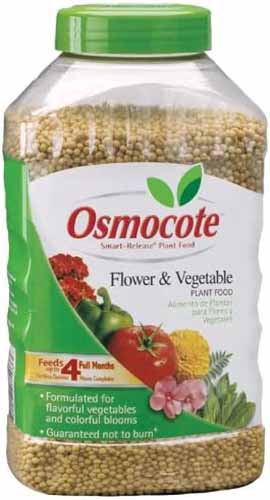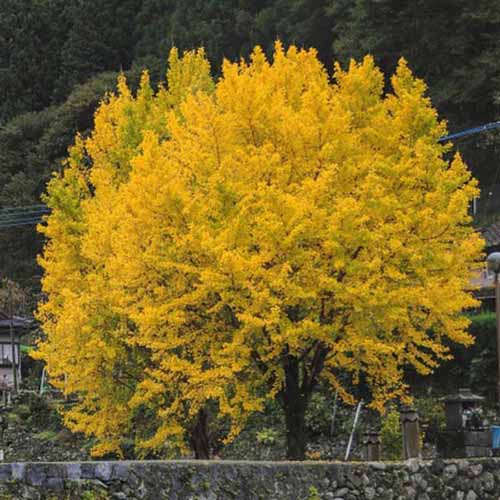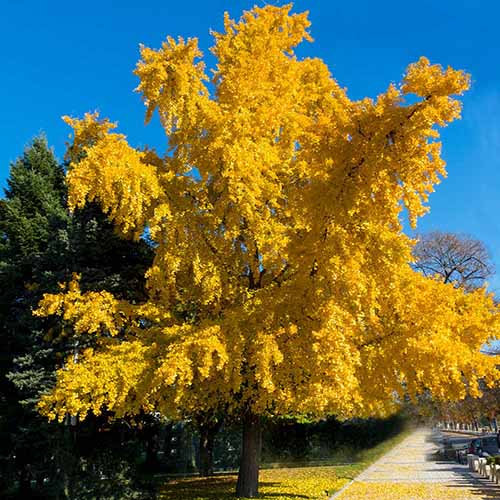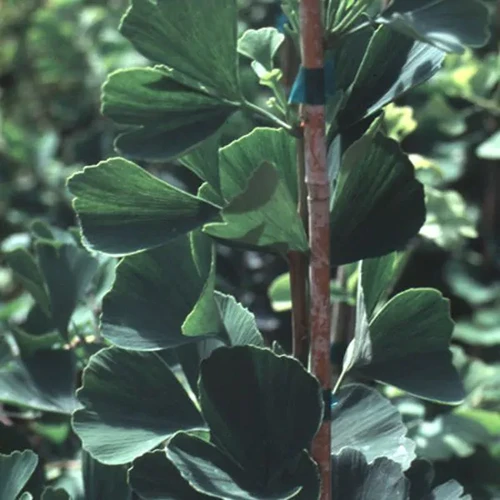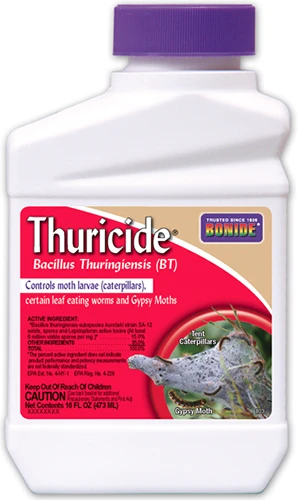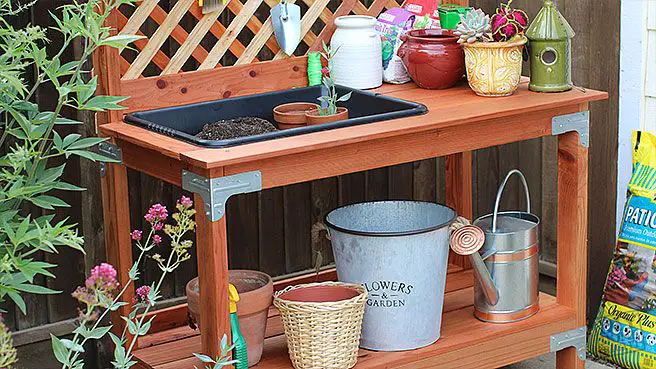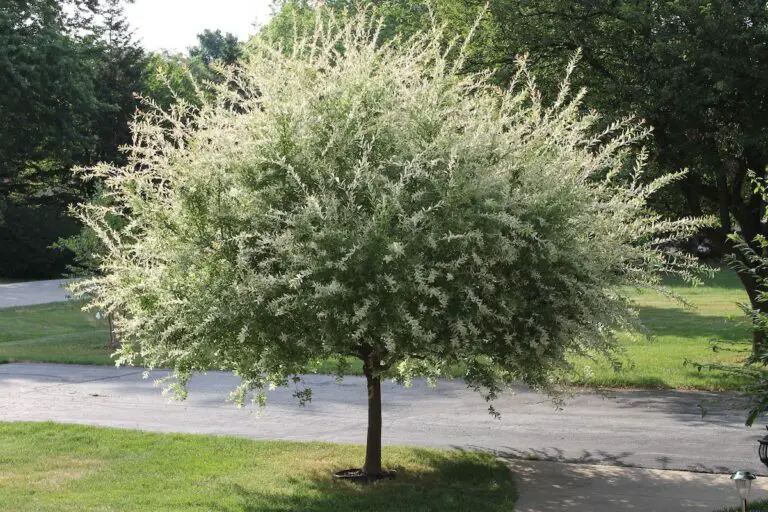Tips on how to Develop and Take care of Ginkgo Timber
Ginkgo biloba
Looking for a uniquely superior planting in your panorama? Look no additional than the ginkgo tree: a plant as historical, majestic, and engaging because the dinosaurs.
A residing fossil from the times of prehistory, Ginkgo biloba has been across the block a few occasions, and has completed so in type.
Beautiful colours, lovely fan-shaped leaves, and an interesting type all mix to make this tree nicely price your rising efforts.
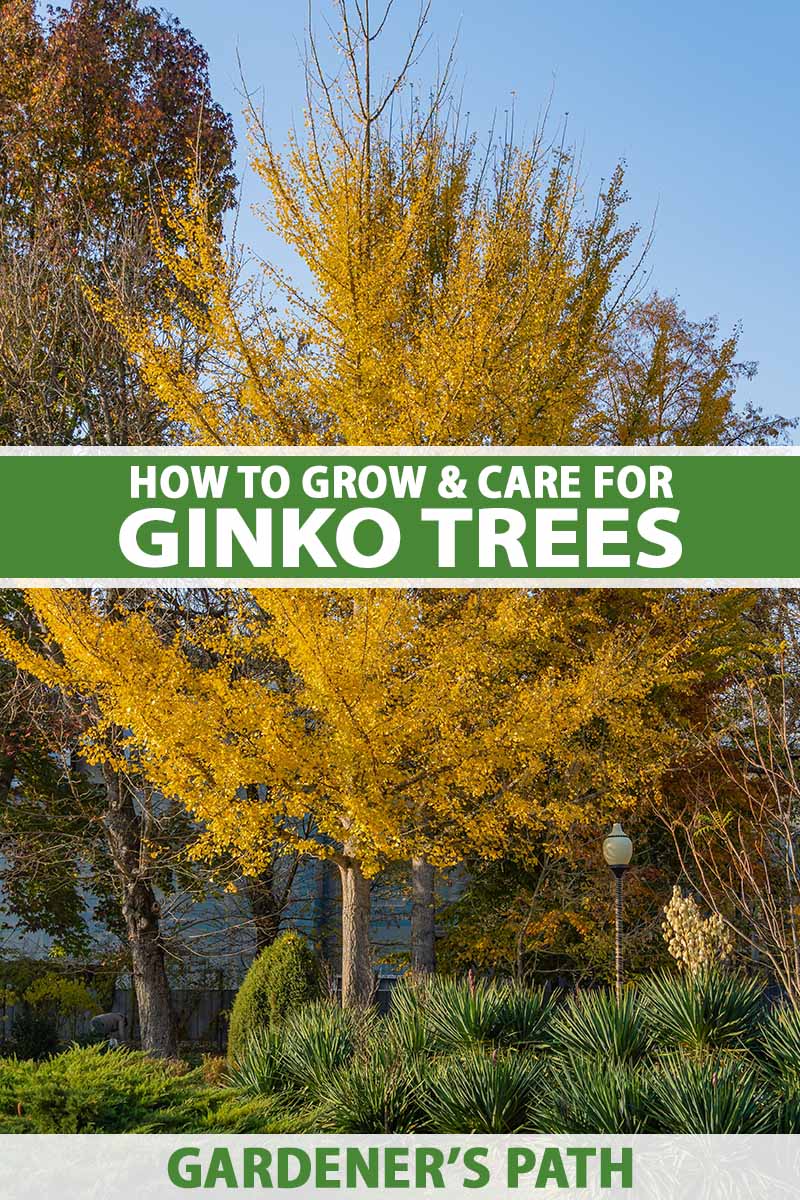
We hyperlink to distributors that can assist you discover related merchandise. Should you purchase from one among our hyperlinks, we could earn a fee.
Not that you just’ll should put in that a lot work – this tree is tremendous simple to domesticate!
Together with its aesthetic worth, a ginkgo is hard and adaptable, making it a strong alternative for poor planting websites or laissez-faire gardeners.
That being stated, I feel these timber are too fairly for apathetic care.
On this information, we’ll cowl precisely what G. biloba requires for optimum well being and aesthetics. By the top, you’ll be able to develop ginkgos like a professional!
Listed below are the specifics of what we’ll be discussing:
What Are Ginkgo Timber?
Often known as the maidenhair tree, Ginkgo biloba is the one surviving member of the Ginkgo genus, the Ginkoaceae household, the Ginkgoales order, the Ginkgoopsida class, and the Ginkgophyta division.
Discuss being one among a sort!
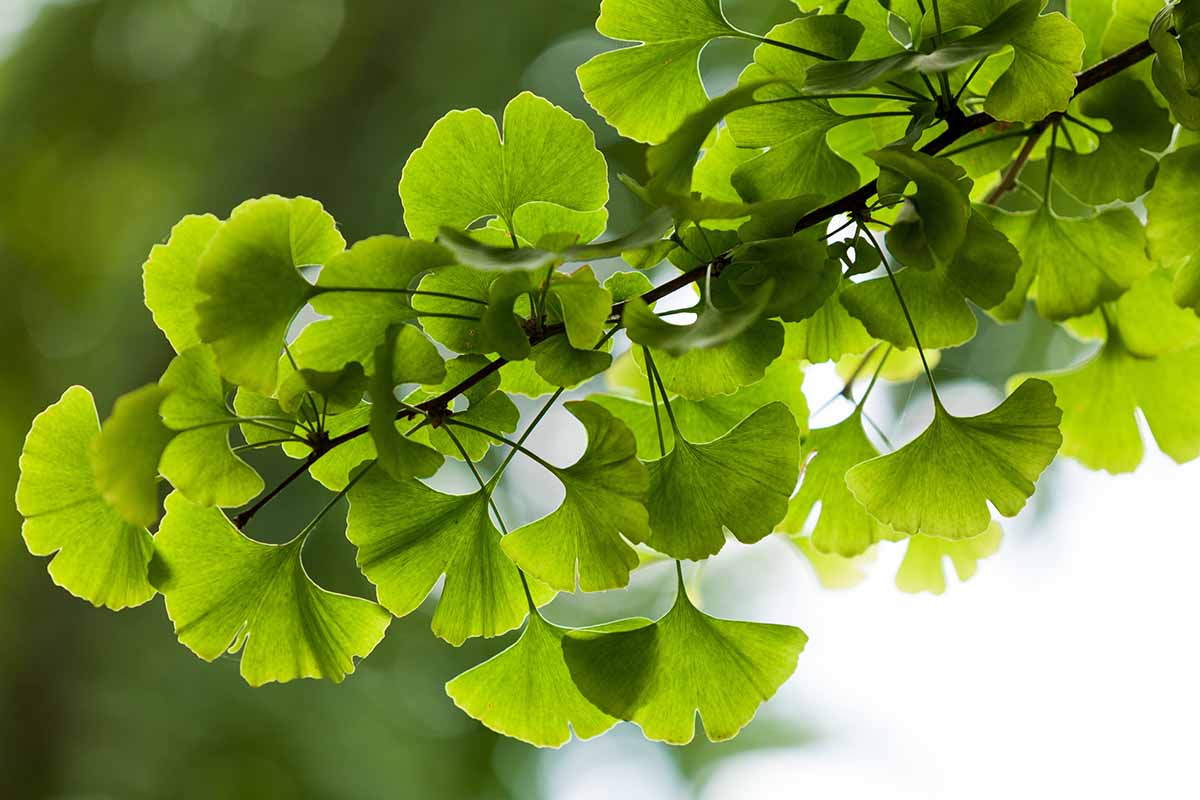
Native to China and hardy in USDA Zones 3 to 9, ginkgos are technically gymnosperms, albeit uncommon ones.
They’re dioecious, with separate female and male crops. In spring, male catkins produce pollen, which the wind carries to the feminine, olive-like ovules.
The ovules secrete a liquid to assist catch the pollen. As soon as caught, the pollen is pulled into the ovule because the liquid dries.
Inside the ovule, the pollen develops right into a male gametophyte, which releases sperm to fertilize the feminine gametophyte inside the ovule.
After fertilization, almond-like seeds are produced on the feminine timber inside a yellow-orange, fleshy pulp.
When the seeds drop and hit the bottom in late fall, the messy pulp emits a odor that’s completely atrocious.
Should you’re attempting to keep away from the scent of vomit, feces, and/or soiled gymnasium socks, it’s vital to solely use male timber in your panorama.
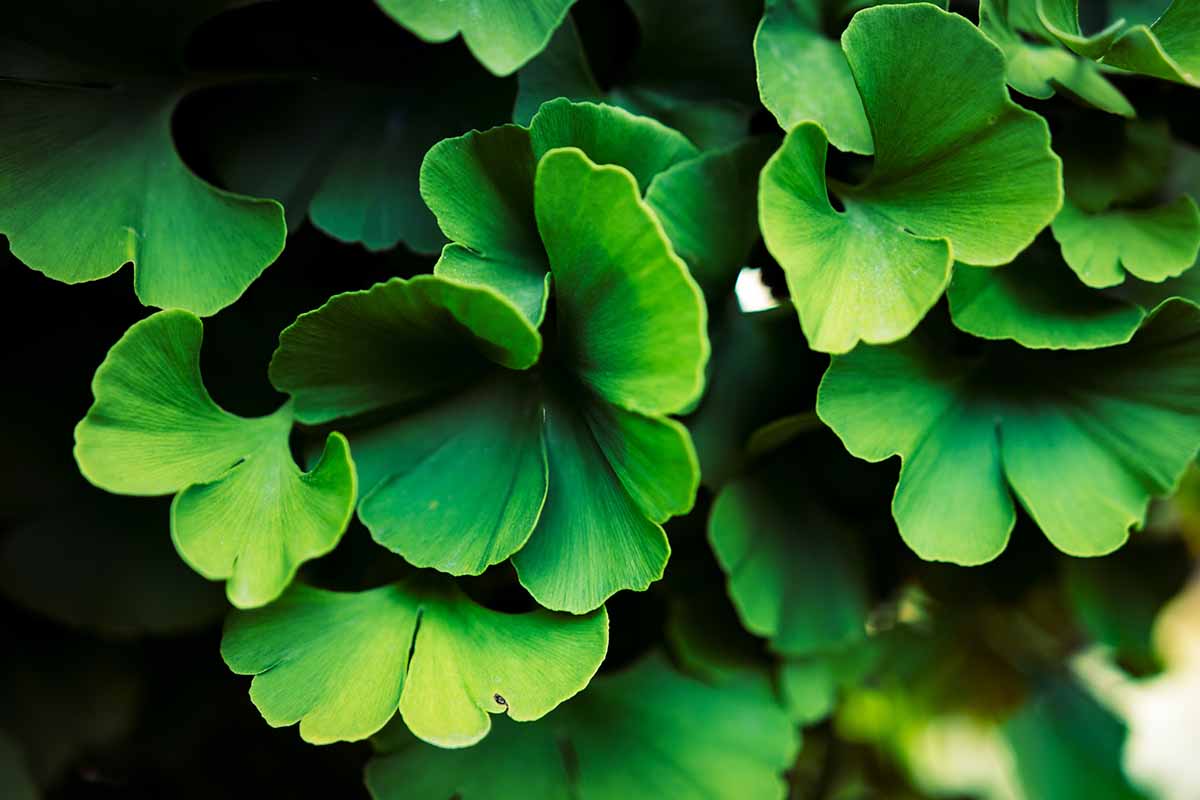
The title Ginkgo was truly a misspelling of the Japanese ginkyo by the German-born botanist Engelbert Kaempfer, a mistake that Carl Linnaeus adopted into his botanical nomenclature.
Ginkyo interprets to the Chinese language yinxing, which suggests “silver apricot” – a reference to the ginkgo’s edible seeds.
The species title biloba means two-lobed, which may describe the foliage completely.
I say “can” as a result of the apical notching that distinguishes a leaf’s two lobes is sort of irregular between leaves on these timber. It may be deep, shallow, or hardly obvious in any respect.
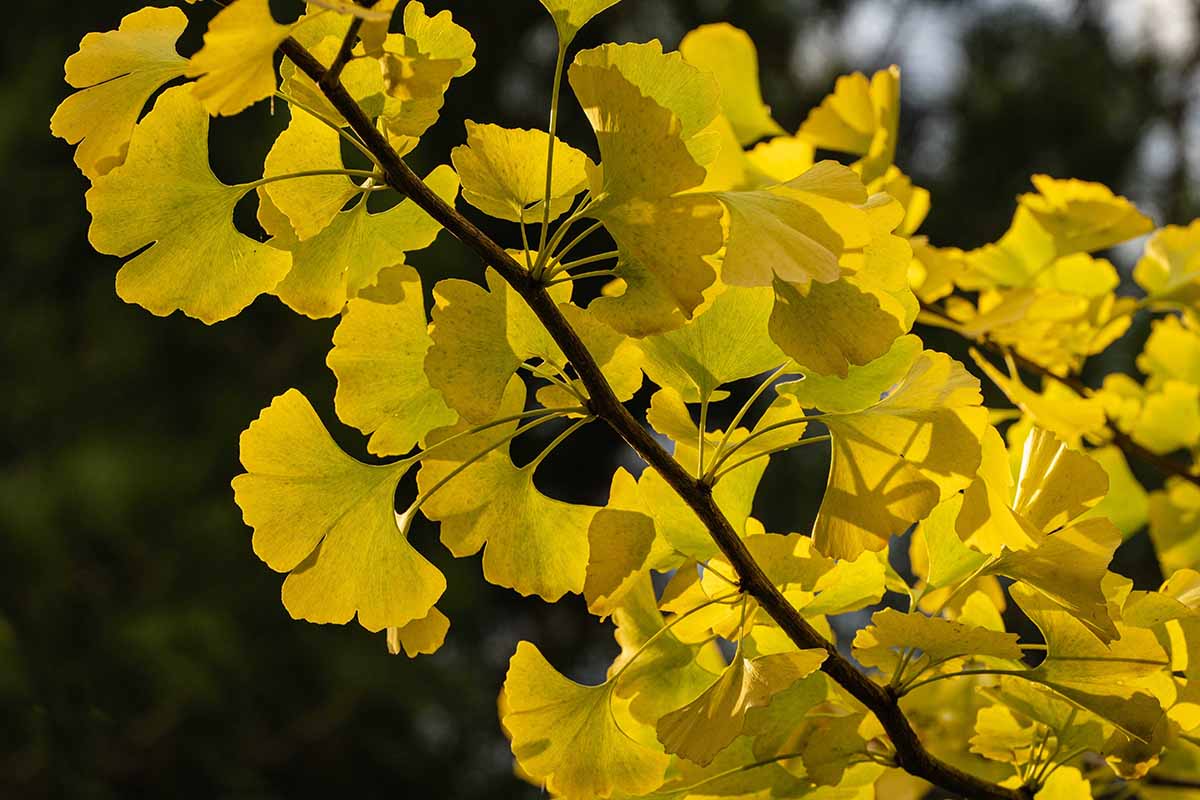
Every leaf is formed like a fan: broad in the direction of the highest and narrowly tapered in the direction of its base.
The leaves are a stunning mild inexperienced throughout the rising season, whereas autumnal foliage is a beautiful shade of yellow. These leaves develop densely sufficient to offer some shady reduction from the solar’s harsh rays.
Sometimes, these timber develop about 50 to 80 toes tall and 30 to 40 toes large.
However since ginkgos can dwell for hundreds of years in supreme situations, they will finally attain heights of over 100 toes, and might unfold out even wider than they’re tall!
Cultivation and Historical past
As talked about earlier, gingkos are historical: the oldest fossils we’ve got of G. biloba had been dated to be over 200 million years previous!
Given how little they’ve modified since, these timber are affectionately known as “residing fossils” alongside different historical organisms such because the coelacanth, the platypus, and the horseshoe crab.
As time marched on, an increasing number of species of Ginkgo went extinct – whether or not from shedding their animal dispersal brokers or from unsurvivable adjustments of their surroundings – till all that remained had been choose Chinese language populations of G. biloba.
Now the final of the ginkgos, G. biloba wasn’t cultivated by people till about 1,000 years in the past in China.
These timber had been grown solely in China for hundreds of years till in regards to the 14th to fifteenth century, when specimens had been acquired in Korea and Japan by way of commerce.

Together with their aesthetics, ginkgos had been valued for his or her medicinal purposes.
In conventional Chinese language medication, the seeds and leaves had been used to fight reminiscence loss, blood problems, and a number of different well being situations.
The botanist Engelbert Kaempfer – keep in mind him? – of the Dutch East India Firm had the primary documented Western encounter with the tree in 1692, on the Firm’s buying and selling station in southern Japan.
He later wrote about and illustrated his discovering, being the primary to say ginkgos in Western literature.
Dwelling specimens had been launched into Europe within the early to mid-1700s, whereas G. biloba wasn’t dropped at North America till 1784. Within the panorama, it’s valued for its toughness, versatility, and general magnificence.
From the late twentieth century onward, ginkgo leaf extract has been touted as an natural complement to deal with quite a lot of situations corresponding to anxiousness, allergic reactions, dementia, and tinnitus… however analysis hasn’t yielded conclusive proof that the extract is efficient.
Nonetheless, the worldwide manufacturing and sale of those leaf extracts is a worthwhile business, estimated to be price a minimum of 500 million {dollars}.
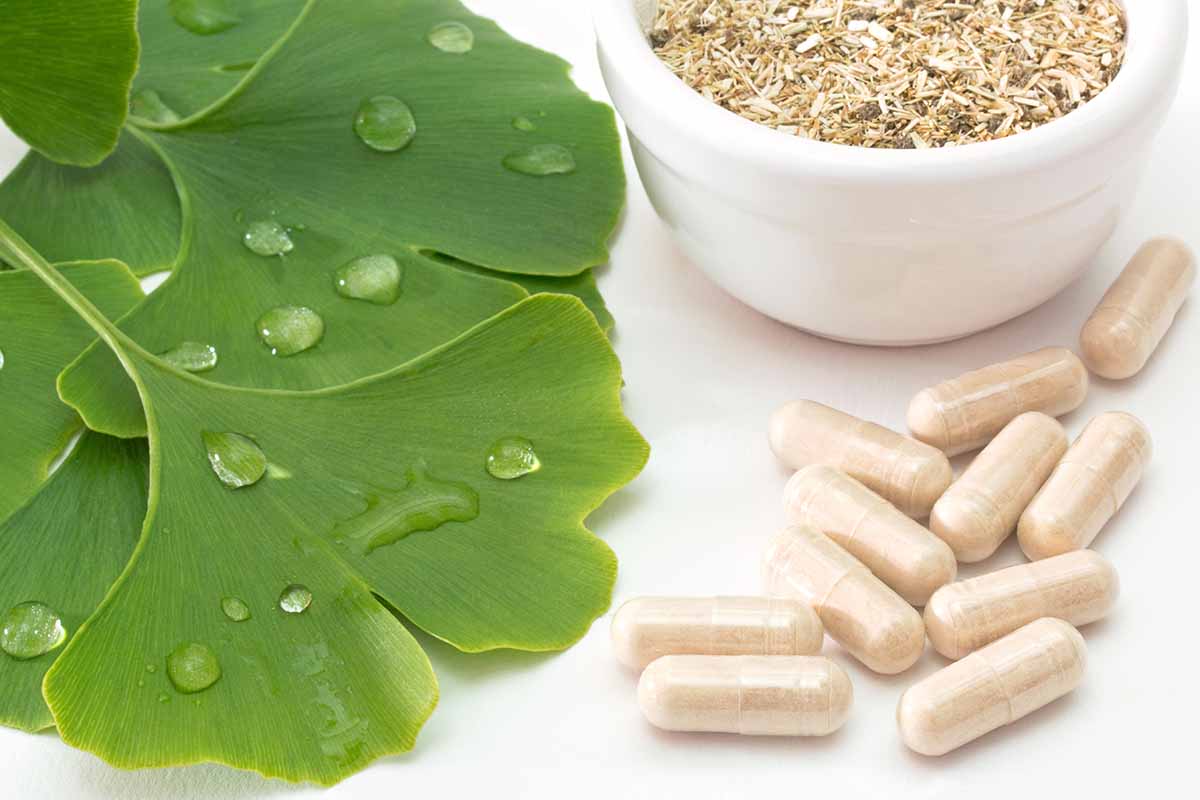
Uncooked ginkgo seeds and unprocessed leaves may be poisonous if eaten in massive portions, and the juicy pulp could cause contact dermatitis.
However in sure forms of Asian delicacies, cooked seeds are loved sparsely, i.e. no quite a lot of seeds per day.
The continued existence of G. biloba as a species is a real testomony to the sturdiness of those timber – they’ve survived a lot, from the dinosaur-destroying asteroid to the notorious atomic bombing of Hiroshima.
And regardless of being endangered within the wild, they’re nonetheless alive and kicking, partly due to us people. Which actually goes to point out what humanity can accomplish, conservation-wise.
Propagation
Ginkgo propagation is greatest completed by way of seeds, cuttings, or transplants.
From Seed
Step one among seed propagation: assortment. To keep away from contact dermatitis, be sure you put on disposable gloves!
When the fruits have dropped from a feminine tree in fall, accumulate some healthy-looking ones from the bottom.
Outdoor or in a ventilated place, except you don’t thoughts the rank odor, take away the seeds from the fleshy pulp and wash them clear.
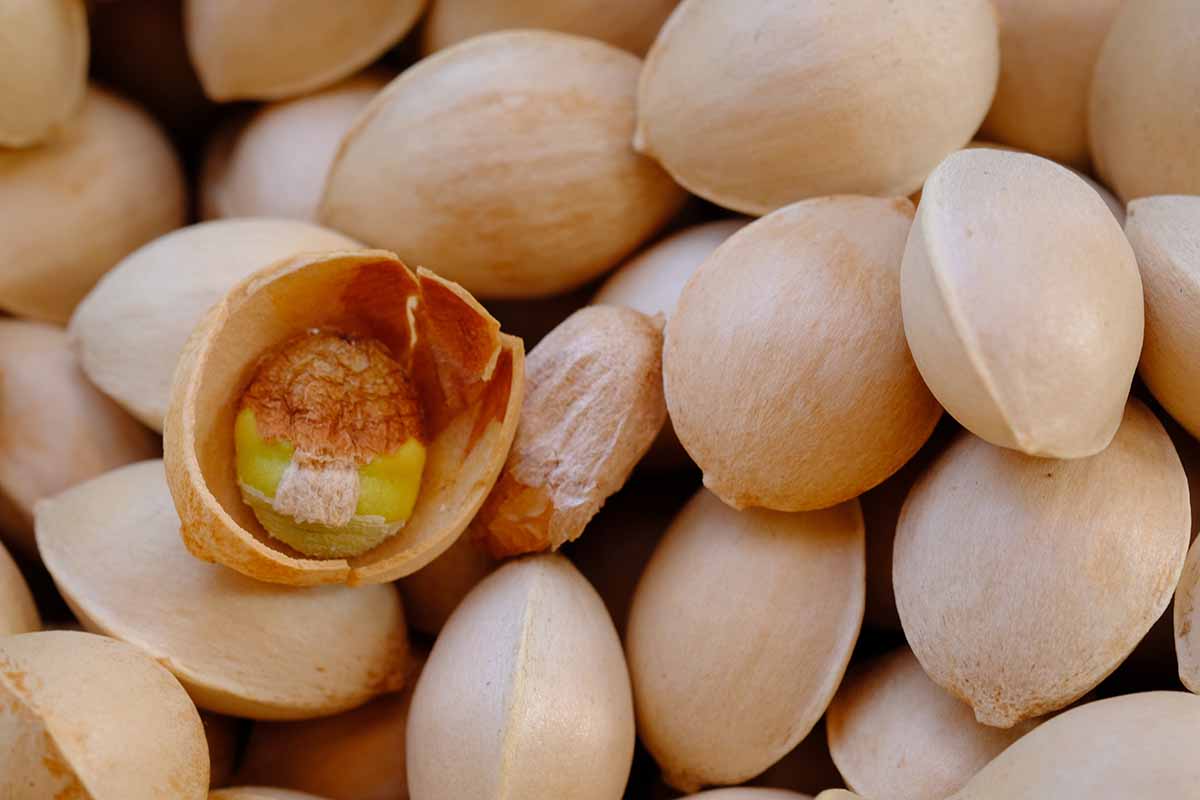
After that, depart them in a plastic baggie of moist sand for 10 weeks at room temperature – or about 60 to 70°F – whereas ensuring to keep up that moisture all through this time.
After the seed embryos have totally matured, it’s best to cold-stratify the seeds.
Transfer the baggie of moist sand to the fridge for 2 to 3 months, nevertheless lengthy it takes to achieve spring. Make certain to maintain the sand moist all of the whereas!
After stratification, every germinated seed may be sown into its personal four-inch container stuffed with a 50:50 mixture of peat moss and perlite.
Sow every seed about an inch deep, gently pat down the media, after which water within the seeds.
Set the containers in a brightly-lit spot outside for 30 to 60 minutes earlier than bringing them again indoors. Add a half hour to a full hour of out of doors publicity every following day, till the seedlings can face up to a full day exterior.
Proceed to maintain the soil moist because the seedlings develop and develop, and repot them as wanted, step by step sizing up till they’ve been repotted into five-gallon containers, which ought to take about two to 3 years. At this level, they need to be prepared for fall or spring transplanting!
From Cuttings
Should you don’t have entry to ginkgo fruits, or don’t need to danger rising a feminine from seed, taking cuttings is the best way to go to propagate clones of the guardian plant.
In June, take six-inch lengths of younger wooden with a sterilized blade from the ends of wholesome branches.
Defoliate the underside half of every reducing. Dip the minimize ends into rooting hormone, like this IBA rooting powder from Bonide that’s out there by way of Arbico Organics.
Bonide Bontone II Rooting Powder
Stick every reducing in its personal four-inch container stuffed with a 50:50 mixture of peat moss and perlite.
Moisten the media, and maintain the cuttings in direct mild someplace indoors. Rooting ought to happen in about seven to eight weeks.
After they root, be sure you repot the cuttings as they begin to outgrow their containers, conserving the potting medium moist all of the whereas.
Be happy to present the containers a quarter-turn every day in order that they don’t develop all lopsided.
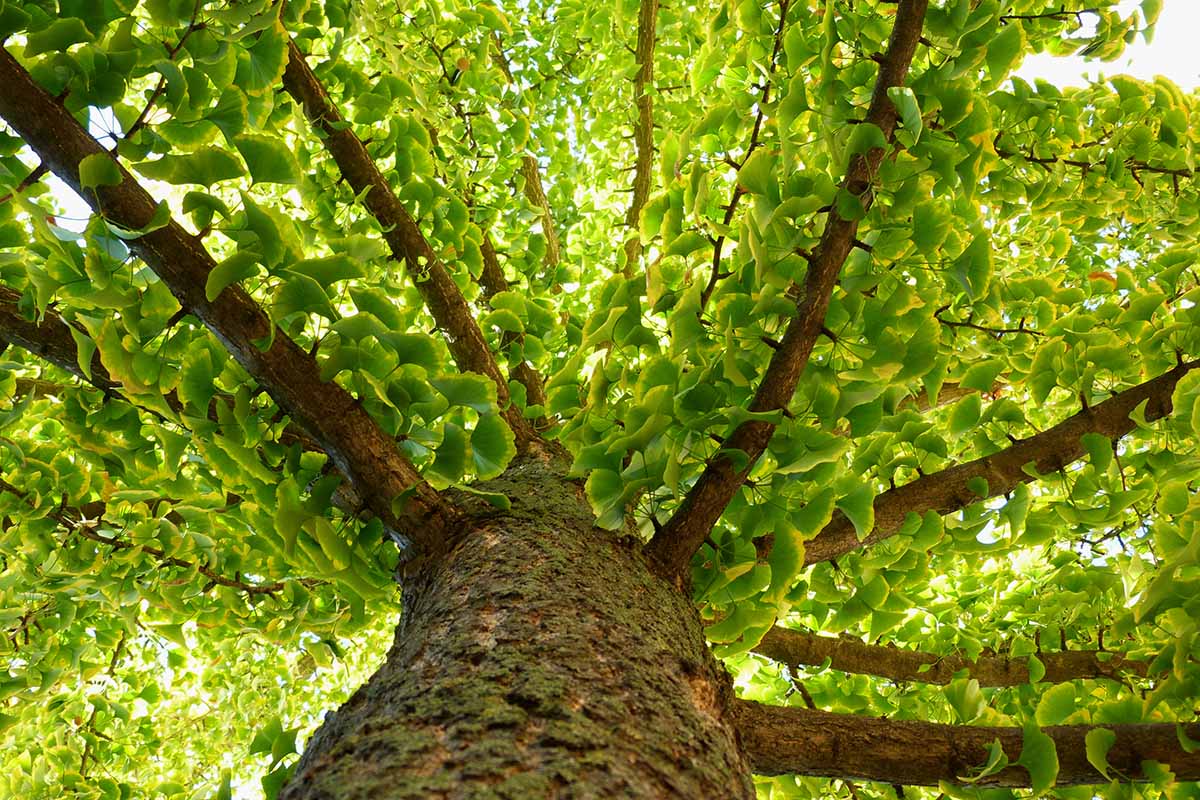
Come springtime, the cuttings may be hardened off as described above for seedlings.
Proceed to take care of and repot the cuttings till they’re rising in five-gallon containers. At this level, they’re all set for transplanting in spring or fall!
Through Transplanting
Put together fertile, well-draining, and deep planting websites, spaced about as far aside as you’d count on the transplants to unfold at maturity.
Dig holes to accommodate the transplants’ root techniques, and only a bit wider.

Decrease your transplant into the opening, backfill with soil, and water it in. Preserve the encircling soil moist till transplants turn out to be established.
Tips on how to Develop
G. biloba ought to be planted in USDA Zones 3 to 9, and supplied with full solar publicity. Don’t fear – it has the warmth resistance to thrive within the higher finish of its hardiness vary!
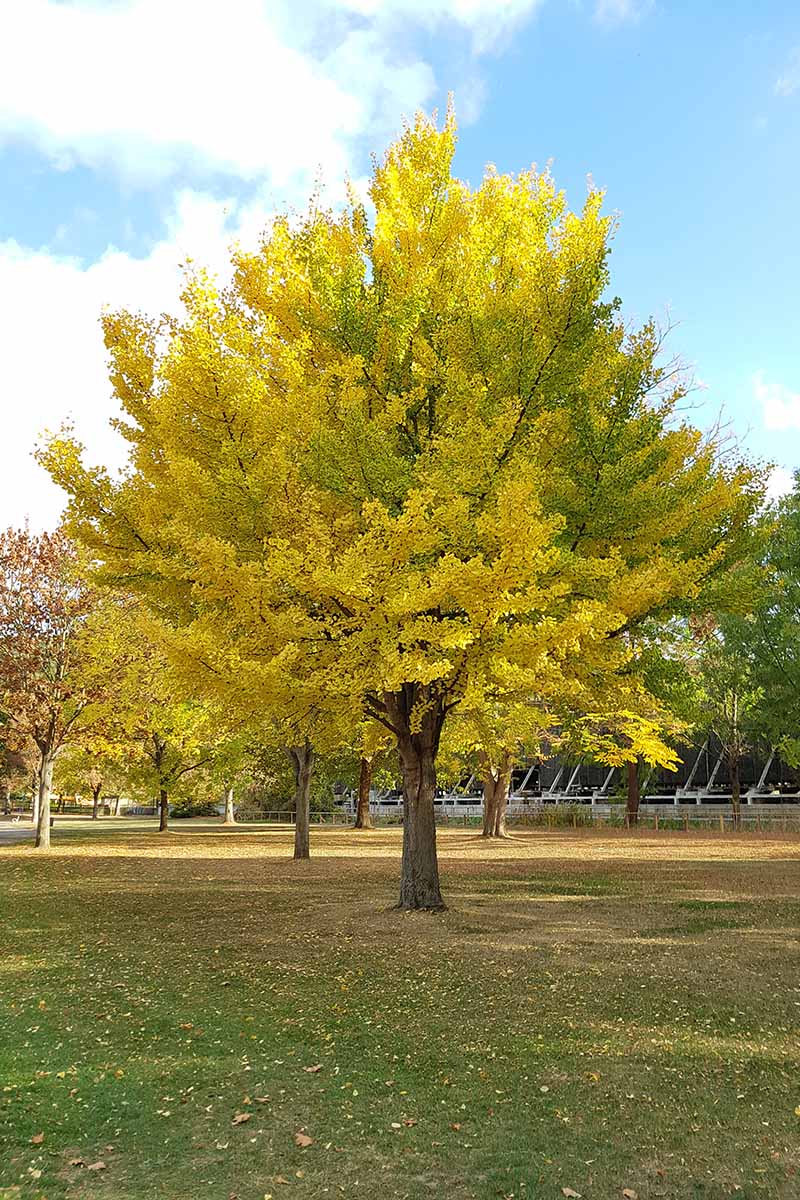
These timber can tolerate confined planting areas and air air pollution, so don’t fear in case your planting web site isn’t in a large open area. These timber are sometimes grown in city settings.
So long as the soil is well-draining, a ginkgo isn’t too choosy. Though it prefers deep, fertile, and barely acidic soil, it will probably deal with numerous soil textures, excessive soil acidity, and even some alkalinity.
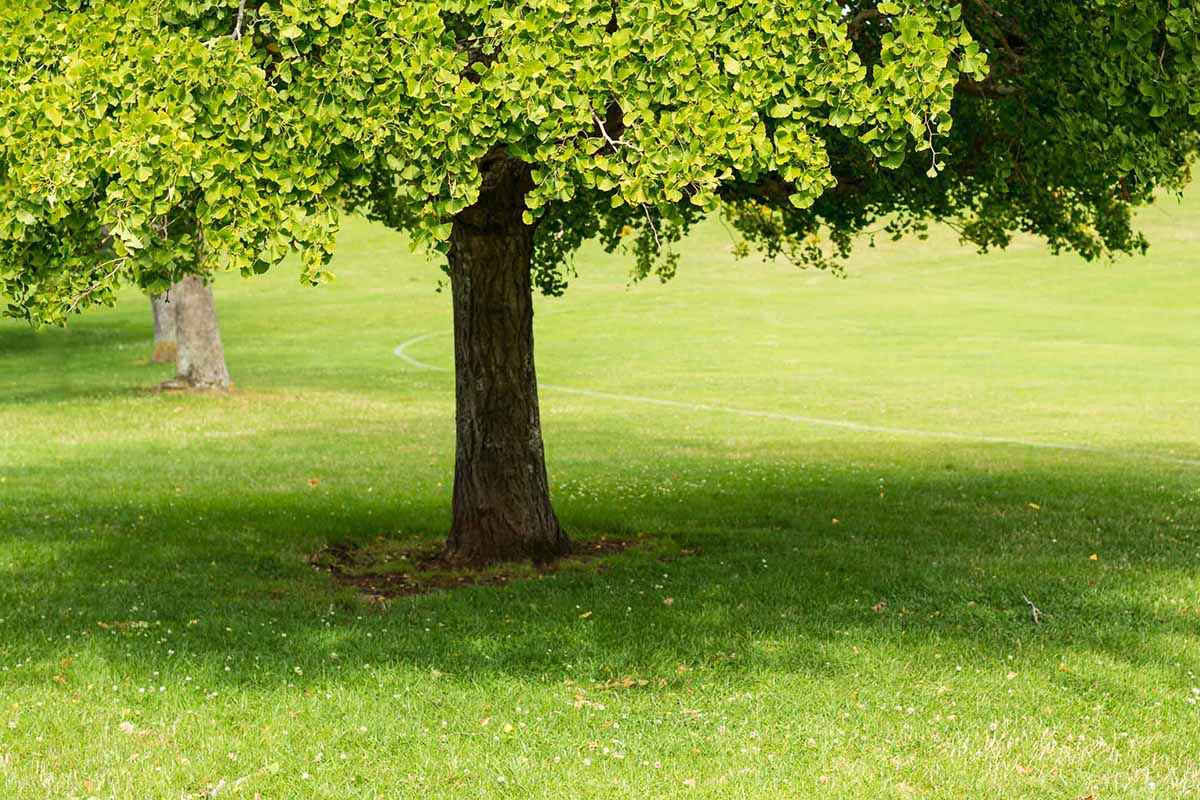
A ginkgo loves reasonable soil moisture, so present water every time the highest two to 3 inches of soil really feel dry.
These timber can truly tolerate drought as soon as established, so don’t sweat it should you don’t at all times present an optimum quantity of water within the absence of rain.
Given this tree’s dislike of “moist toes” – i.e. oversaturated soils – it’s truly much better to irrigate too little than an excessive amount of.
For springtime fertilization, you’ll be able to both work a pair inches of compost or well-rotted manure into the foundation zone, or apply a well-balanced, slow-release fertilizer as an alternative.
For the latter, do this 14-14-14 NPK fertilizer from Osmocote, which’ll feed your crops for 4 complete months! It’s offered in 1.5-pound containers on Amazon.
Rising Ideas
- These timber develop greatest in full solar publicity.
- Above all else, the best soil ought to be well-draining.
- Water every time the highest two to 3 inches of soil dry out.
Pruning and Upkeep
Though you’ll be able to (and will!) prune lifeless, diseased, or broken branches everytime you occur to note them, a ginkgo will most likely want a spot of pruning at first of spring.
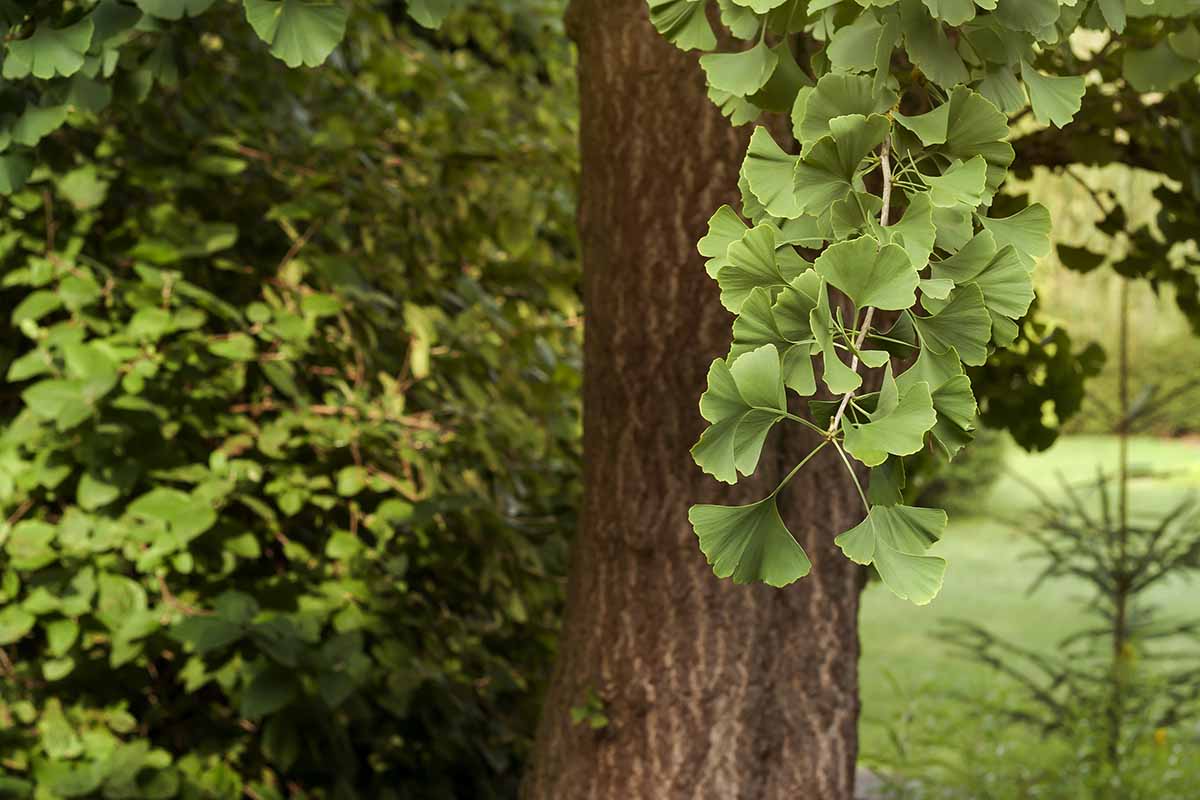
Throughout this shaping session, it’s best to take away any constructions that take away from the tree’s aesthetics, corresponding to crossing or drooping branches.
Don’t prune away greater than a 3rd of the tree’s aboveground mass in a single go!
Sustaining just a few inches of mulch across the trunk will assist to guard the roots, insulate the soil, and preserve moisture. Preserve a pair inches of area between the mulch and the trunk, and don’t pile it up like a volcano.
You additionally could or could not need to rake up the autumn leaves after they fall.
Eradicating them will certainly be neater, whereas “leafing” them on the bottom will enable them to behave as a pure supply of mulch and natural matter. It’s as much as you!
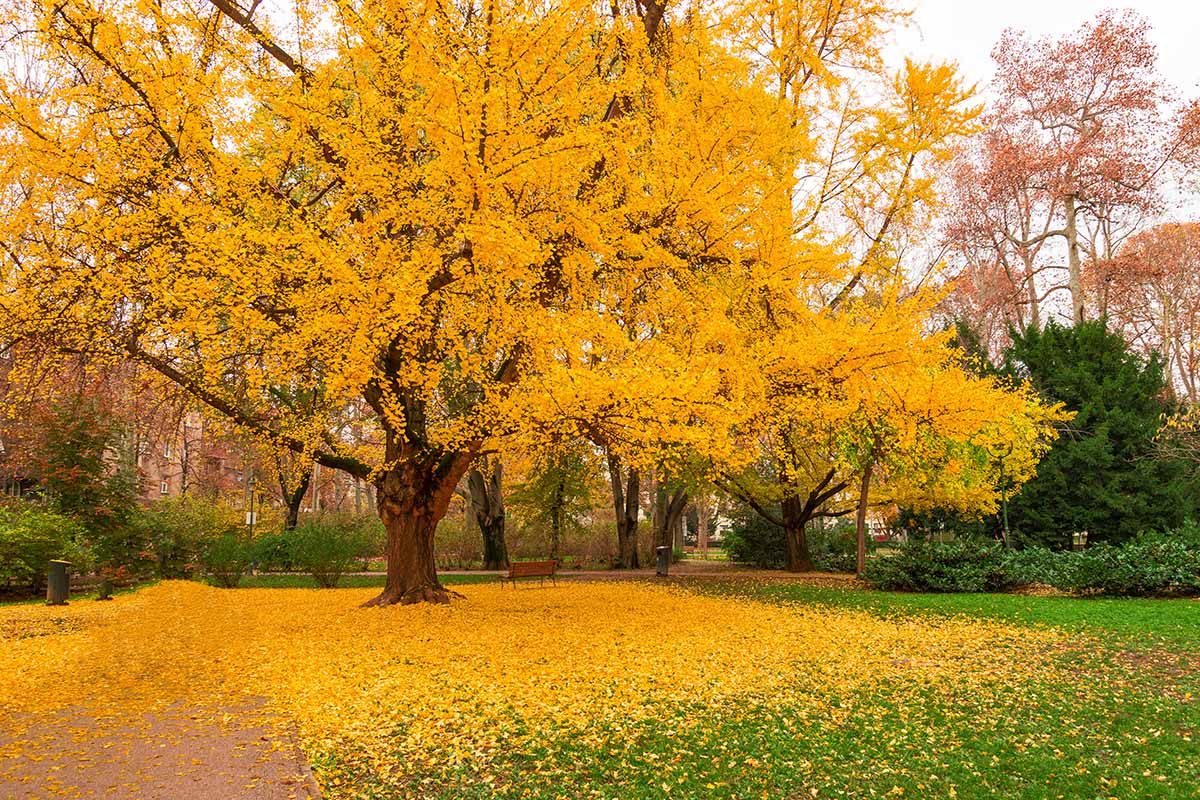
Should you’re rising a feminine ginkgo… your nasal passages have my condolences.
When the fruits begin to drop in fall, you’ll positively need to conduct a day by day cleanup if these are planted close to sidewalks, driveways, or walkways.
Nothing ruins a pristine panorama fairly just like the ambient aroma of upchuck.
Cultivars to Choose
Don’t get me flawed, a normal G. biloba is unquestionably superb, and one among these may be bought in #3 and #5 containers from Nature Hills Nursery.
However for many who need to “department” out a bit, there are some strong cultivars on the market. Right here’s a handful of male varieties that I actually like:
Autumn Gold
Reaching mature dimensions of fifty toes tall by 30 toes large, ‘Autumn Gold’ sports activities a fantastically symmetrical, broadly-spreading, and conical type.
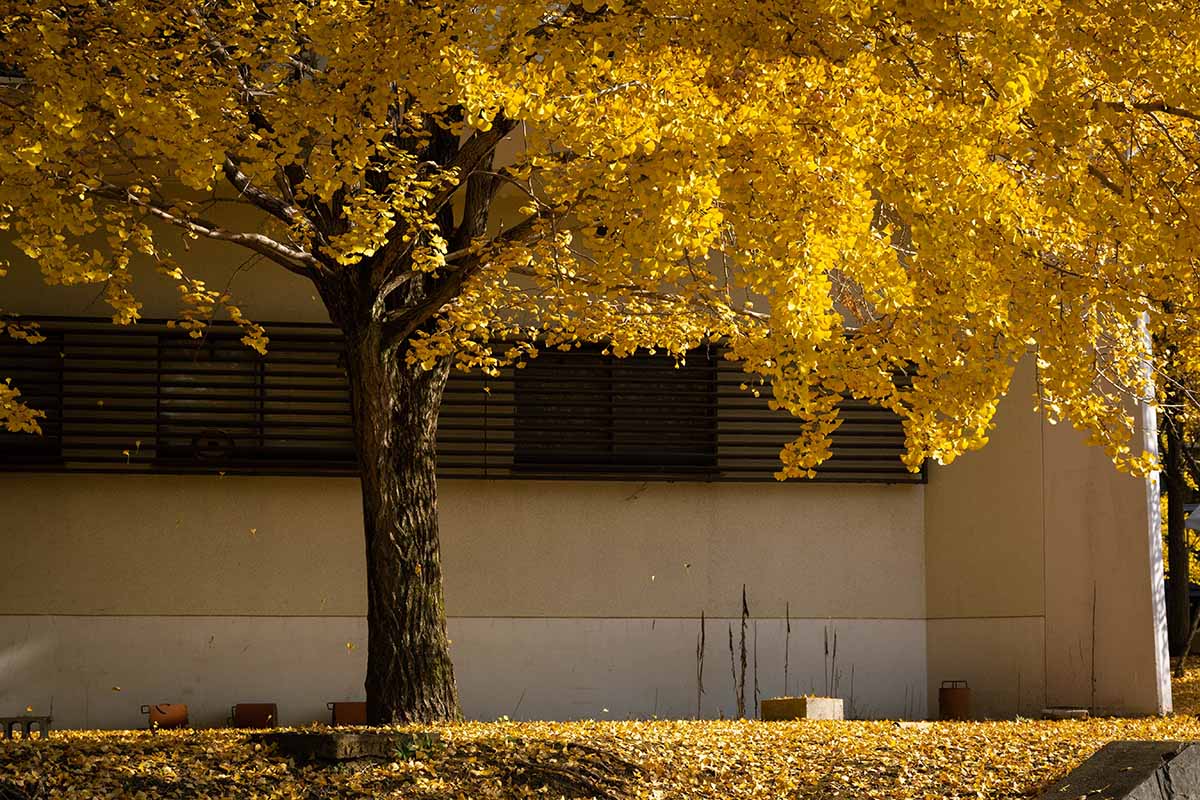
Plus, this selection has leaves that flaunt a completely beautiful golden yellow hue in fall.
They persist on the tree for weeks earlier than primarily dropping all of sudden, leaving a fantastic golden carpet of fallen foliage across the trunk.
For followers of fairly autumn leaves with simple cleanup, you’ll be able to’t go flawed with ‘Autumn Gold.’
To buy ‘Autumn Gold’ in beginning sizes of 4 to 6 toes, go to FastGrowingTrees.com.
Fairmount
Whether or not in politics or landscaping, generally you simply desire a sturdy central chief. ‘Fairmount’ has simply that, together with a slender, upright, and densely-crowned type.
This cultivar was chosen from a tree in Philadelphia’s Fairmount Park, therefore the title.
With a mature top of 75 toes and unfold of 25 toes, ‘Fairmount’ is an ideal choice to create shade in a slender planting web site!
Jade Butterfly
Wish to go extra compact? Attempt ‘Jade Butterfly,’ a dwarf cultivar that grows to be about 12 to fifteen toes tall and 6 to 10 toes large.
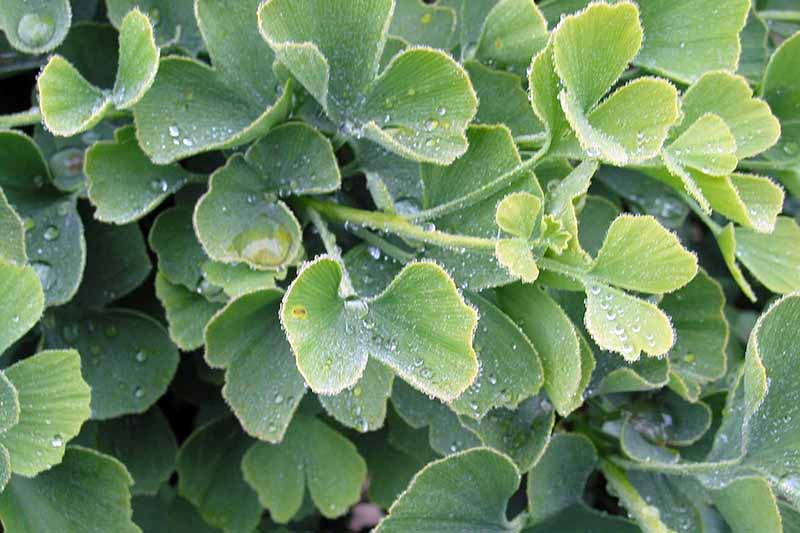
Named for its deeply notched leaves that resemble the wings of jade inexperienced butterflies, this selection has an upright, vase-shaped type and a sluggish progress fee.
‘Jade Butterfly’ is proof that good issues do are available in small packages!
To buy ‘Jade Butterfly’ in a #1 container, give the parents over at Nature Hills Nursery a digital go to.
Princeton Sentry
Attempting to convey your panorama’s awesomeness? There’s no higher method to get your level throughout than with a pointed ginkgo.

With a mature top of 40 to 60 toes and unfold of 15 to 25 toes, ‘Princeton Sentry’ has a narrowly conical type that’s pointed at it’s apex and a bit broader on the base.
Essentially the most uniform and picturesque ones I’ve seen are pleasantly geometric, and extra supreme for becoming in tighter areas than the usual species.
For a ‘Princeton Sentry’ in quite a lot of beginning sizes, take a look at Nature Hills Nursery.
Managing Pests and Illness
G. biloba is comparatively proof against pests and ailments, however it’s best to stay conscious of a pair potential issues.
Herbivores
Not a lot to fret about within the plant-munching mammals division… a minimum of these days, anyway.
There are data of modern-day seed dispersal by choose critters corresponding to wild cats, badgers, and Pallas’s squirrels, however again in prehistory, ginkgos most likely had manner extra mammalian guests than they do now.
It’s even been theorized that dinosaurs may have eaten from ginkgos. However a Jurassic Park-style dino zoo continues to be a good distance off. Kudos to whomever has to finally provide you with that IPM plan!
Bugs
Should you do job of stopping pests from infesting your crops, you’ll additionally assist forestall the ailments that they might vector, so it pays to remain on high of your pest administration!
Foliage-Feeding Caterpillars
Most bugs aren’t large followers of consuming ginkgo foliage, however some leaf-munching caterpillars corresponding to omnivorous loopers – aka Sabulodes aegrotata and S. caberata – could have themselves a style or two.
Younger Sabulodes larvae are pale yellow caterpillars, whereas older larvae are inexperienced, with black and yellow stripes and a brownish-bronze head.
Each sorts can devour holes in foliage, which may be unaesthetic and scale back photosynthesis.
Infested foliage ought to be completely sprayed with Bacillus thuringiensis, a useful micro organism, whereas useful bugs corresponding to parasitic wasps and lacewing larvae like to munch on these pests.
For treating massive and hard-to-spray timber, it’s most likely price consulting an arborist.
Bonide gives a 32-ounce, ready-to-spray bottle of Bt by way of Arbico Organics, whereas some useful bugs may be bought from Arbico Organics.
Root-Knot Nematodes
Belonging to the Meloidogyne genus, root-knot nematodes are microscopic roundworms that invade plant roots and stimulate them to develop big feeding cells, which they feed on from inside.
The encompassing root tissue swells up into knot-like galls, which intervene with water and nutrient uptake.
Above the soil line, signs embrace leaf wilting, stunted progress, and foliar chlorosis.
These signs are not often deadly in woody crops corresponding to ginkgos, however they will positively depart troubled specimens wanting lower than their greatest.
Lengthy-lasting nematode administration is difficult and troublesome, so it’s greatest to concentrate on prevention.
Keep away from transplanting from infested components of your backyard, and solely use nematode-free crops and soil.
Illness
The strategies used to forestall nematode infestations additionally work for a lot of ailments! Sanitize instruments, use disease-free inventory, and don’t develop your crops in already-infected soils.
Leaf Scorch
Leading to browned leaf suggestions and interveinal chlorosis, leaf scorch in city ginkgos has a number of potential causes.
It may be brought on by insect-vectored Xylella fastidiosa micro organism or environmental stressors corresponding to excessive warmth and drought.
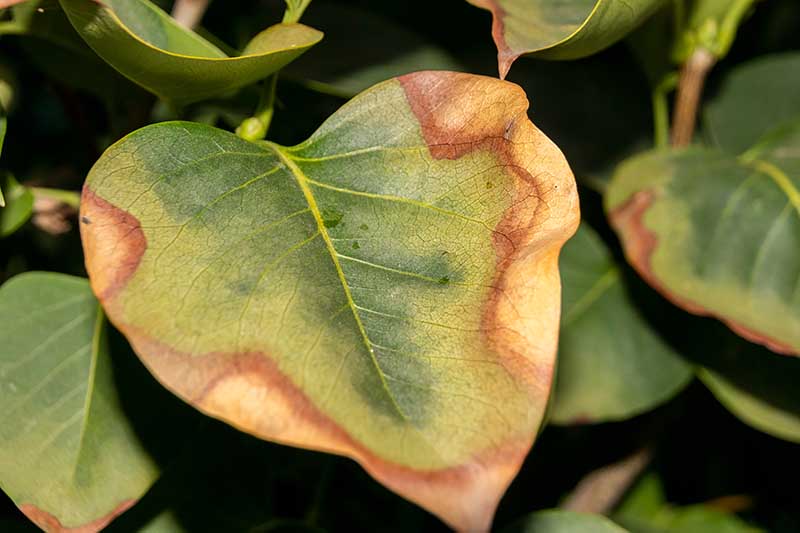
Lab testing is unquestionably really helpful to find out the trigger, because the preliminary signs are comparable whatever the trigger.
It’s greatest to forestall and deal with environmental leaf scorch with correct irrigation, however there’s no identified remedy for bacterial leaf scorch.
If bacterial leaf scorch results in the tree’s decline and loss of life – which is attainable – it’s greatest to take away and get rid of the infested specimen and exchange it with a harder tree.
Crops proof against bacterial leaf scorch embrace black tupelo, Japanese zelkova, and beech timber.
Root Rot
Whether or not brought on by a scarcity of oxygen or by pathogens corresponding to Armillaria fungi, root rot is a gnarly situation for a plant to endure.
Rotted-out roots can’t take up water or vitamins successfully, which wreaks havoc above the soil line: chlorosis, leaf drop, department dieback, and even loss of life may end up.
An excessive amount of irrigation is a serious reason for root rot, so ensure that to dial in your watering and supply ample drainage.
There’s no identified remedy for root rot, so any troubled crops which can be close to loss of life and/or have a majority of their roots rotted will must be lifted and destroyed.
Finest Makes use of
G. biloba ain’t a one-trick pony, of us: it’s a tree that gives shade, does simply positive in city websites, and is usually a spectacular specimen, particularly with age.
Its distinctive foliage is gorgeously placing – particularly in fall – and the tree may even be cultivated as bonsai!
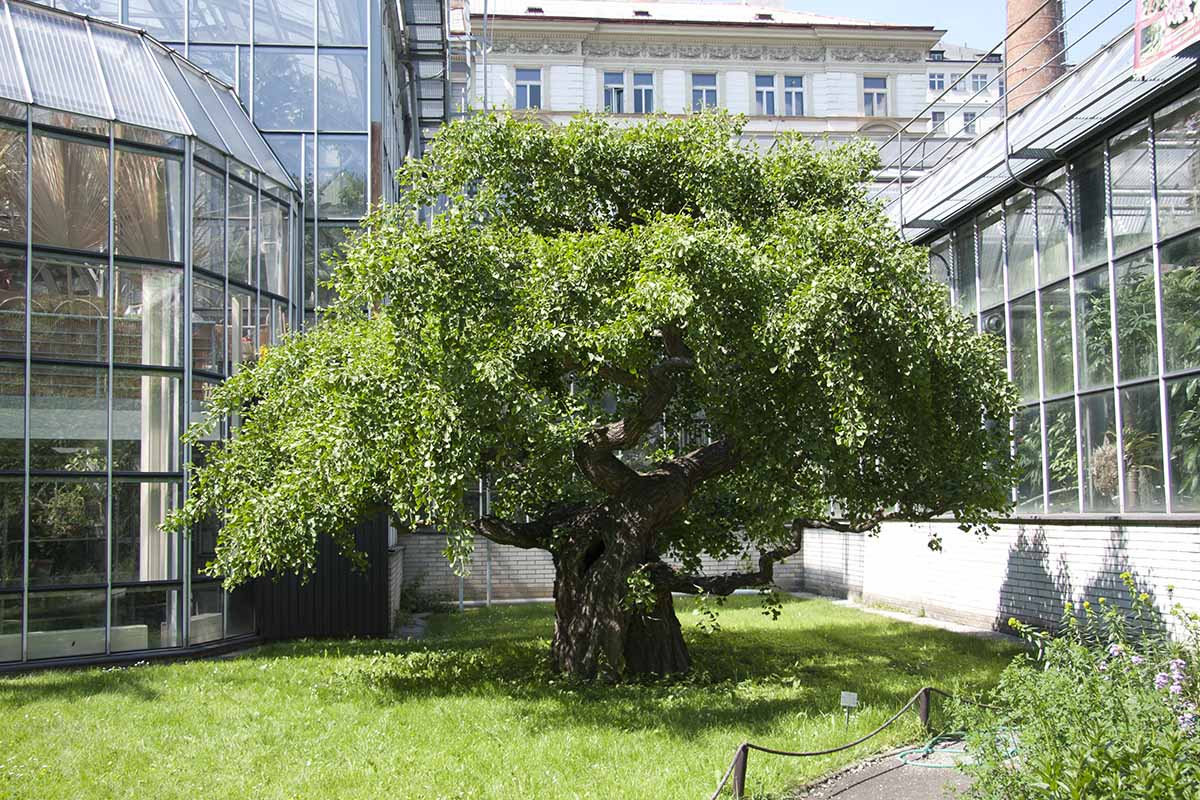
Its uniqueness can be a little bit of a double-edged sword, as it might look a bit misplaced subsequent to extra historically suburban plantings like crimson maples and arborvitae.
However when paired with different prehistoric-looking crops corresponding to ferns, mosses, and sago palms, G. biloba offers a pleasant method to keep in mind how far life on Earth has come.
Fast Reference Rising Information
| Plant Sort: | Broadleaf deciduous tree | Flower/Foliage Shade: | Inexperienced/inexperienced, yellow in fall |
| Native to: | Japanese China | Water Wants: | Average |
| Hardiness (USDA Zones): | 3-9 | Upkeep: | Low |
| Bloom Time: | March-April | Tolerance: | Air air pollution, confined areas, deer, drought, warmth, salt |
| Publicity: | Full solar | Soil Sort: | Deep, fertile, numerous textures |
| Time to Maturity: | About 20 years (fruiting) | Soil pH: | 5.0-8.0 |
| Spacing: | Width of mature unfold | Soil Drainage: | Nicely-draining |
| Planting Depth: | 1 inch (seeds), depth of root system (transplants) | Makes use of: | Bonsai, fall colour, shade tree, specimen, city planting |
| Top: | 50-80 toes | Order: | Ginkgoales |
| Unfold: | 3-40 toes | Household: | Ginkgoaceae |
| Development Charge: | 1-2 toes per 12 months | Genus: | Ginkgo |
| Frequent Pests and Illnesses: | Foliage-feeding caterpillars, root knot nematodes; leaf scorch, root rot | Species: | Biloba |
Go for Some Ginkgo!
Trendy and geologically-young crops are positively superb, however we shouldn’t overlook what got here earlier than. What higher method to protect the botanical previous than with G. biloba?
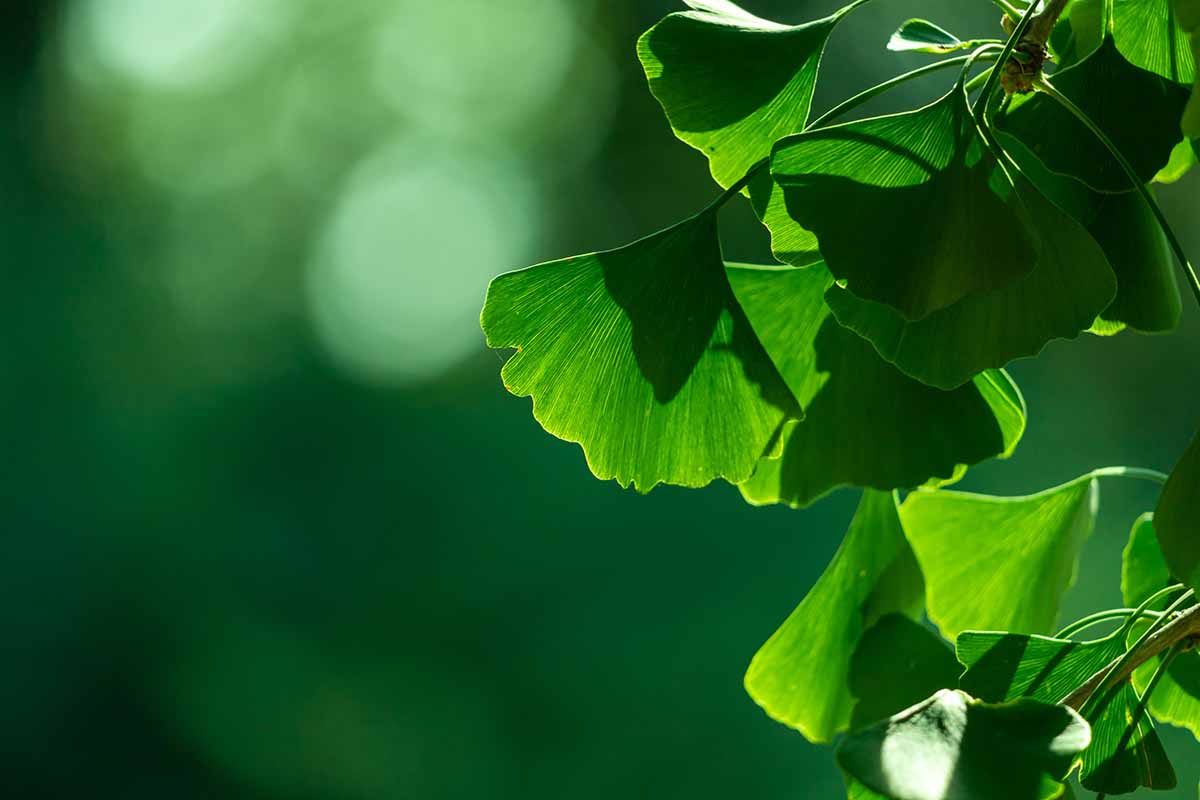
Even past their historical past, ginkgo timber are fairly cool. And who is aware of? Should you plant one now, your descendants may have a very epic plant for millenia to come back!
Did I miss something? Have experiences of your individual to share? Head on all the way down to the feedback part!
Wish to develop different shade timber within the panorama? Listed below are some extra guides to get you began:

